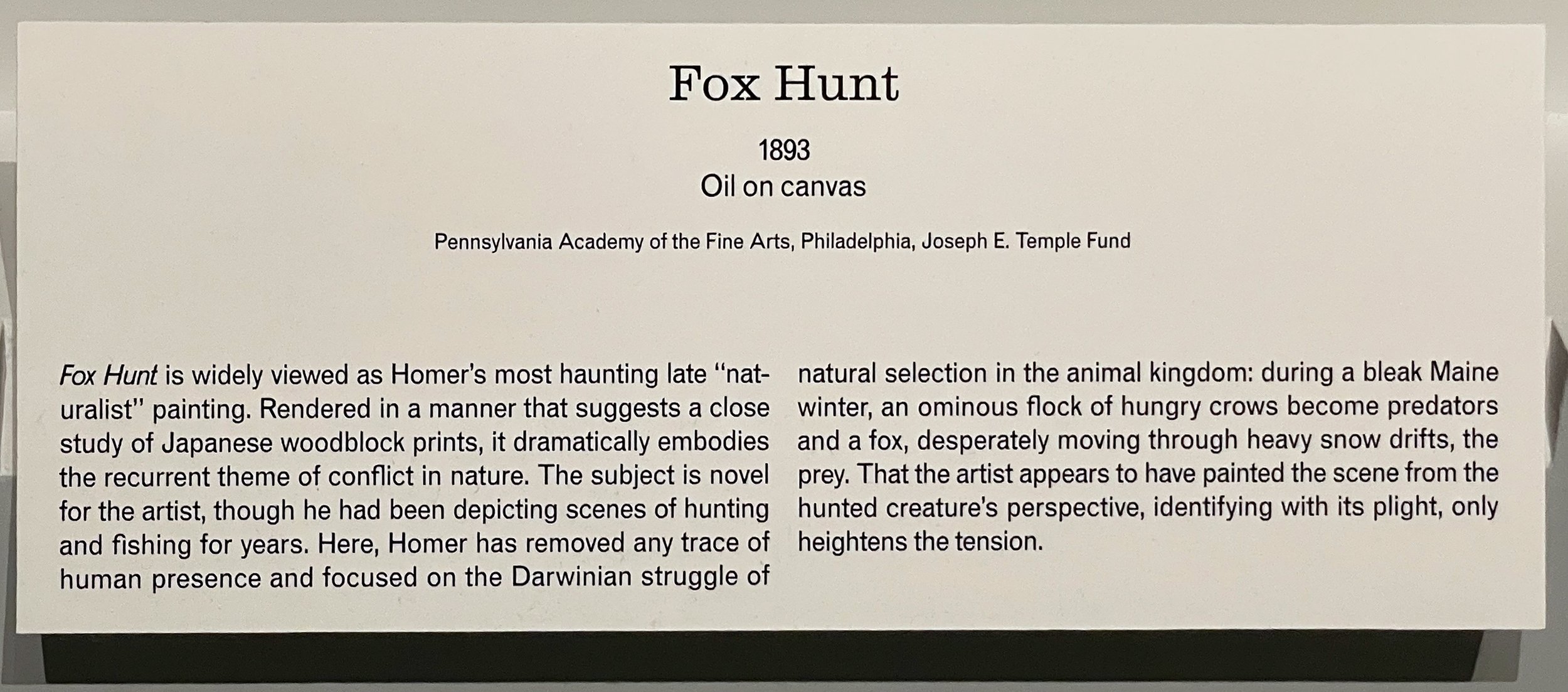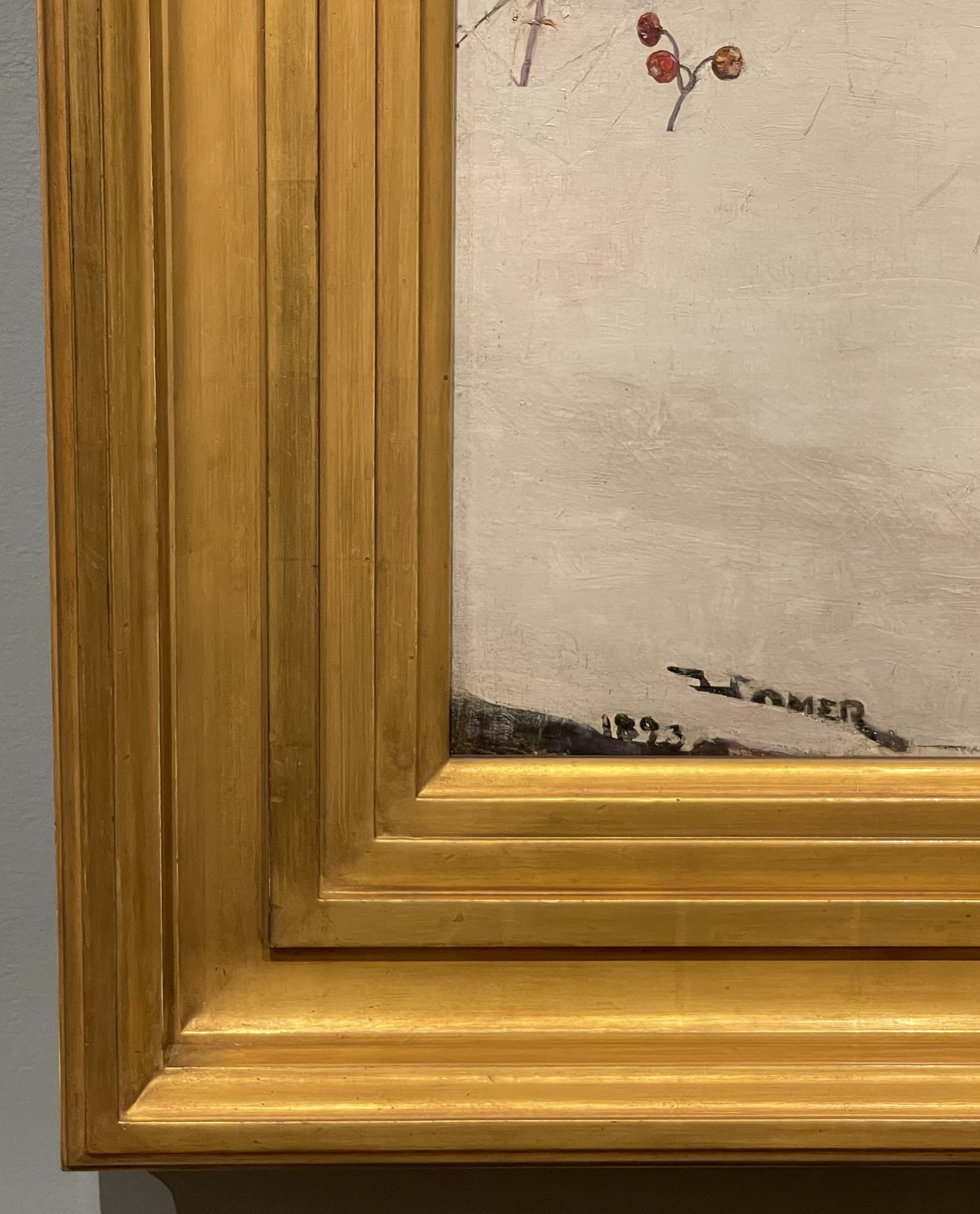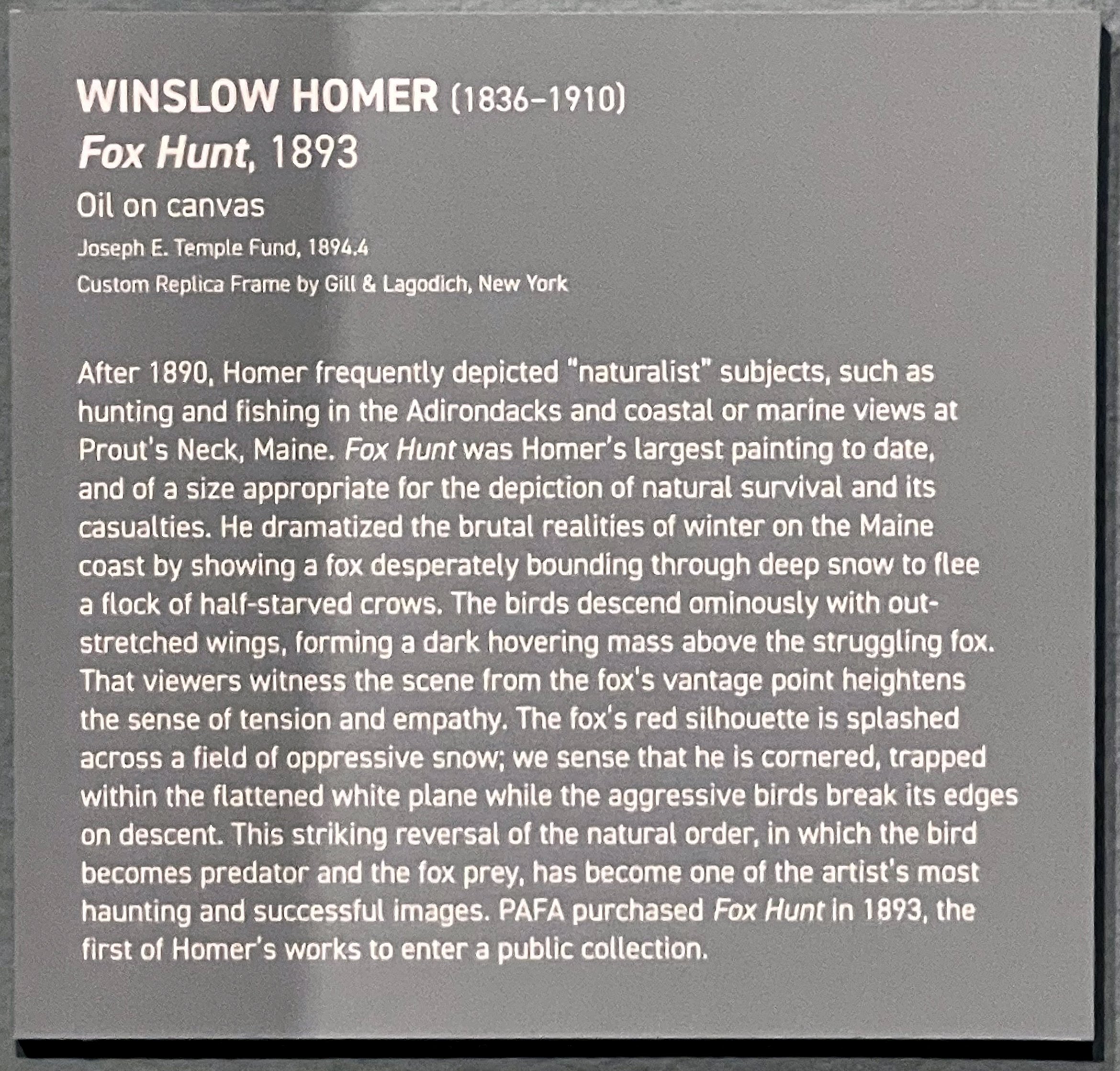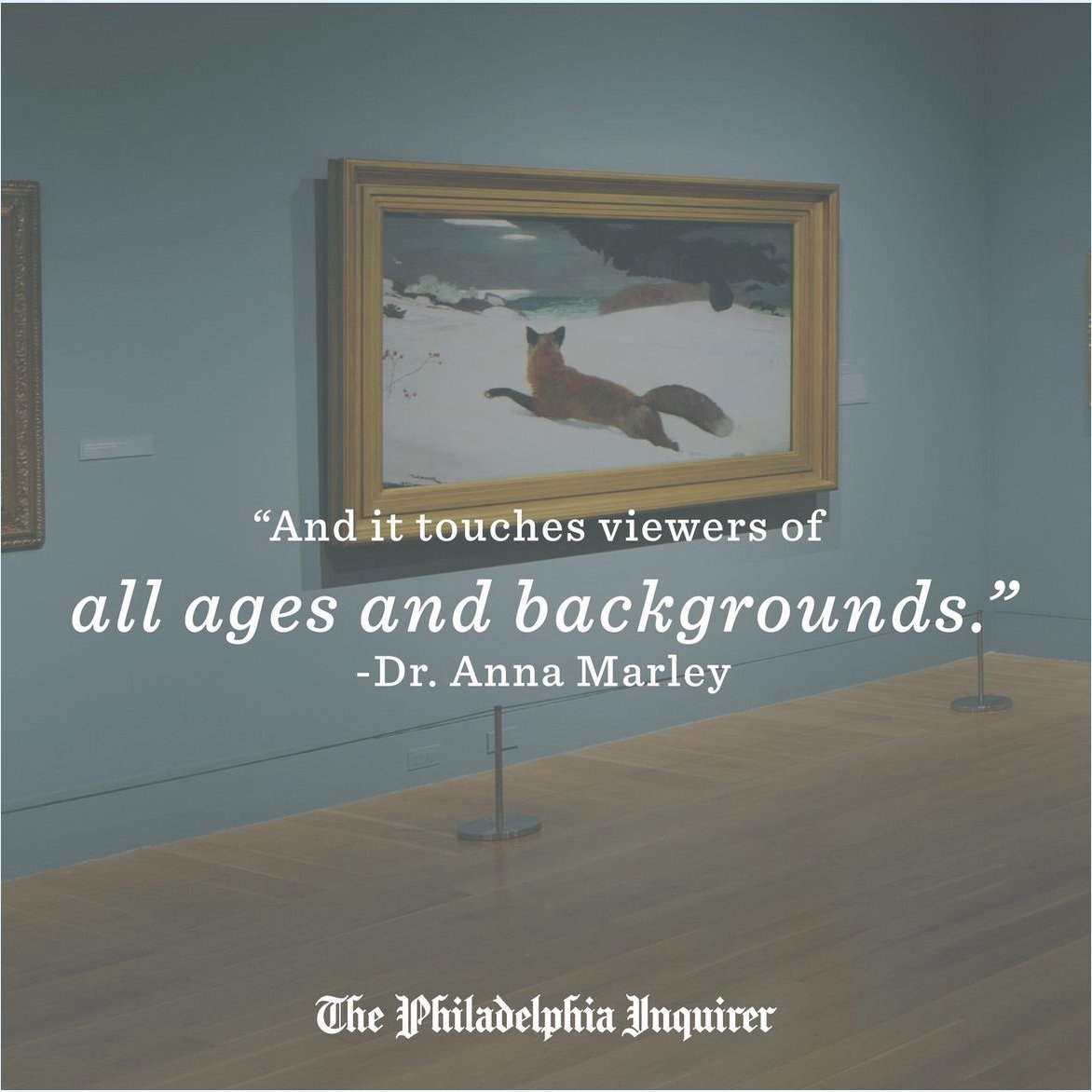PENNSYLVANIA ACADEMY of the FINE ARTS (PAFA)
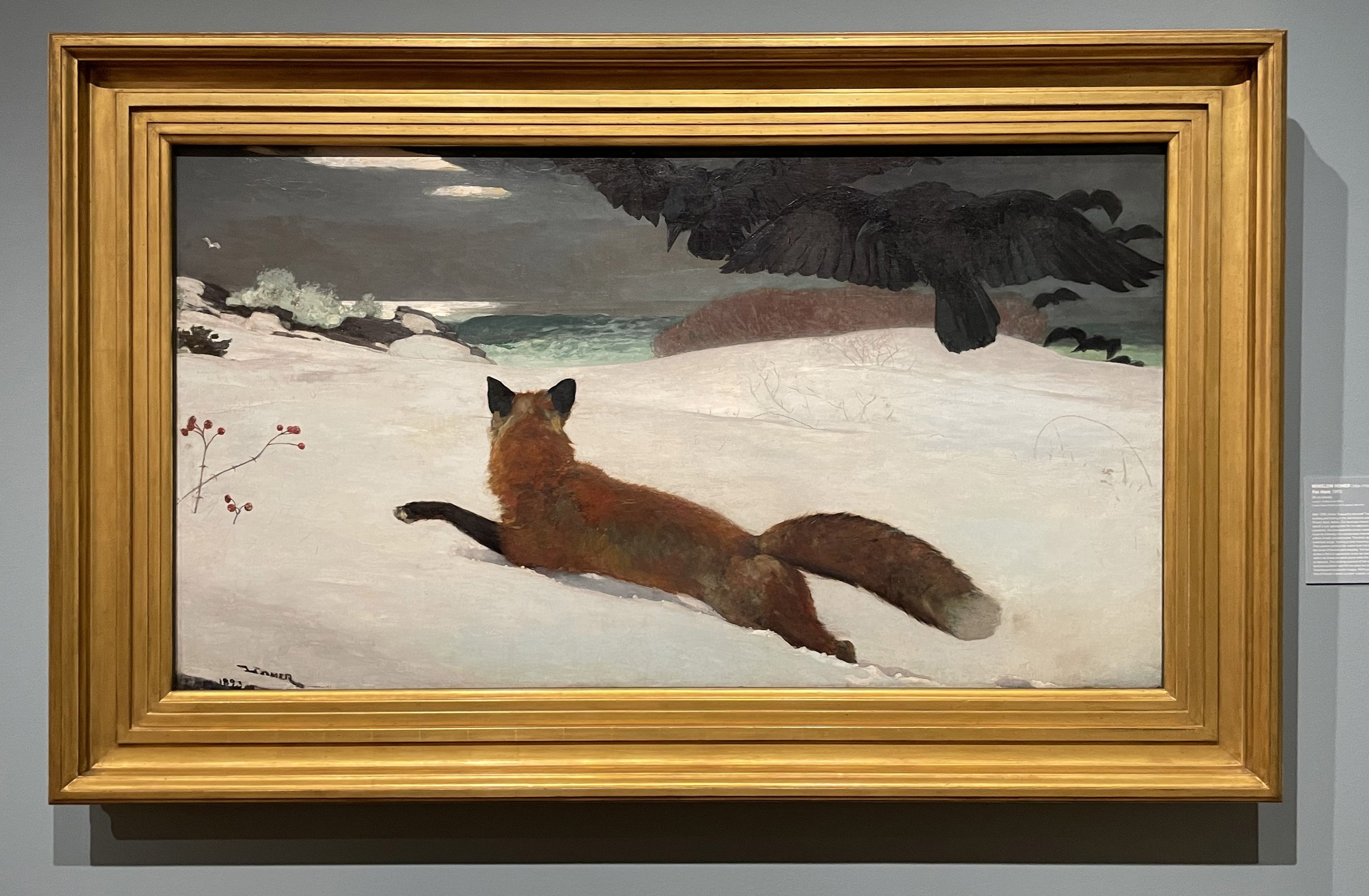
WINSLOW HOMER (1836–1910)
Fox Hunt, 1893, oil on canvas, 38 x 68-1/2 in. Recently reframed by Gill & Lagodich for Pennsylvania Academy of the Fine Arts. Custom-made replica of original Homer frame chosen by the artist for other works of this period, c. 1890–1910 gilded and patinated milled wood, molding width ~7 in. This elegant modern design exemplifies the stark modernity of the composition. Painting credit: Joseph E. Temple Fund, 1894.4
Currently on view in the stellar exhibition ‘Making American Artists: Stories from PAFA, 1776–1976.’
“‘Fox Hunt’ is widely viewed as Homer’s most haunting late “naturalist” painting. ¬ Rendered in a manner that suggests a close study of Japanese woodblock prints, it dramatically embodies the recurrent theme of conflict in nature. The subject is novel for the artist, though he had been depicting scenes of hunting and fishing for years. Here, Homer has removed any trace of human presence and focused on the Darwinian struggle of natural selection in the animal kingdom: during a bleak Maine winter, an ominous flock of hungry crows become predators and a fox, desperately moving through the heavy snow drifts, the prey. That the artist appears to have painted the scene from the hunted creature’s perspective, identifying with its plight, only heightens the tension.”—Met museum exhibition label.
“After 1890, Homer frequently depicted "naturalist" subjects, such as hunting and fishing in the Adirondacks and coastal or marine views at Prout's Neck, Maine.¬ ‘Fox Hunt’ was Homer’s largest painting to date, and of a size appropriate for the depiction of natural survival and its casualties. He dramatized the brutal realities of winter on the Maine coast by showing a fox desperately bounding through deep snow to flee a flock of half-starved crows. The birds descend ominously with outstretched wings, forming a dark hovering mass above the struggling fox. That viewers witness the scene from the fox’s vantage point heightens the sense of tension and empathy. The fox’s red silhouette is splashed across a field of oppressive snow; we sense that he is cornered, trapped within the flattened white plane while the aggressive birds break its edge on descent. This striking reversal of the natural order, in which the bird becomes predator and the fox prey, has become one of the artist’s most haunting and successful images. PAFA purchased ‘Fox Hunt’ in 1893, the first of Homer’s works to enter a public collection.” —PAFA exhibit label.
